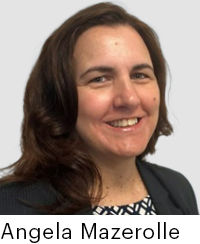
On September 9, 2024, the Canadian Association of Pension Supervisory Authorities (CAPSA) revamped its Capital Accumulation Plan (CAP) Guidelines and created a new guideline that addresses risk management in all group pension plans. These are Guideline No. 3, Guideline for Capital Accumulation Plans, and Guideline No. 10, Guideline for Risk Management for Plan Administrators.
With respect to Guideline No. 3, CAPSA is responding to the widespread adoption of target-date funds, and the growing number of mature plans. Target-date funds optimize investment growth before retirement. A plan becomes mature when the majority of its members are approaching or already in retirement.
“Significant developments have occurred in the financial services industries over the past 20 years and the new guideline reflects important updates of regulators' views on the responsibilities of CAP sponsors,” said CAPSA Chair Angela Mazerolle in a press release.
The guidelines also apply to plan administrators and service providers and “clarifies expectations surrounding information to be communicated to members,” she added.
Independence and disclosure
Several actuarial firms reacted to the update. In a bulletin, the firm Normandin Beaudry observed that CAPSA has analyzed Guideline No. 3 every five years since it was first published in 2004. The 2024 version, however, is the first major revision in 20 years, underlined the actuarial firm.
According to Normandin Beaudry, this revision will require plan sponsors to adopt a structured governance framework. They will also have to strengthen communication and financial education, as well as increase supervision, the firm adds. Its bulletin mentions that plan sponsors will have to ensure, for example, the independence of the advice given to plan members by the service provider they supervise.
According to the actuarial firm, the guideline also requires plan sponsors to clearly disclose all investment option fees, detail their effect on retirement income, and present costs in a way that is understandable and straightforward for plan members.
Monitoring investment options
In a press release issued in October 2024, actuarial firm Eckler pointed out that Guideline No. 3 comes after more than two years of consultation. CAPSA had submitted the draft guideline in May 2022.
According to Eckler, regulators have revised the guideline “to support continued plan growth and better member outcomes”. The actuarial firm explains that the revised guideline strives “to balance the need for direction on responsibilities, conflicts of interest and member education with pragmatic application.” It will ensure that “sponsors, providers and members are engaged to reach plan objectives,” writes Eckler.
Among other things, the actuarial firm points out that the guideline clarifies and reinforces the sponsor's responsibilities with regard to selecting and reviewing investment options, and managing transfers between investment options. The sponsor must also ensure that a policy is in place regarding a member’s failure to make investment choices.
In capital accumulation plans, members who do not choose an investment option have their contributions directed to a default fund. Sponsors will need to ensure that the default investment option is suitable as a member's core investment, explains Eckler.
ETFs recognized
The firm notes that Guideline No. 3 now recognizes exchange-traded funds (ETFs) and non-redeemable investment funds as possible investment funds in capital accumulation plans.
It writes that the guideline emphasizes the ongoing review of investment options. Among other things, this involves plan sponsors assessing whether the fees for these options are reasonable and competitive.
They will also have to consider whether their plan's investment options provide value to their members, and whether they align with risk and return expectations.
Several plans covered
The definition of Capital Accumulation Plans (CAPs) affected by Guideline No. 3 is a tax-assisted plan in which members can make investment decisions among two or more investment options selected by the plan sponsor.
An employer, a union, an association, a board of trustees, licensed administrator of a Pooled Registered Pension Plan (PRPP) or Voluntary Retirement Savings Plan (VRSP) can establish such a plan.
CAP plans include: Defined Contribution Pension Plan (DCPP), Registered Retirement Savings Plans (RRSP), Deferred Profit-Sharing Plan (DPSP), Locked-In Retirement Account (LIRA), Registered Retirement Income Fund (RRIF), Life Income Fund (LIF), Pooled Registered Pension Plan (PRPP), Voluntary Retirement Savings Plan (VRSP), Tax Free Savings Account (TFSA), Registered Education Savings Plan (RESP) and First Home Savings Account (FHSA), Eckler highlights in its bulletin.
Guideline no. 10
On September 9, 2024, CAPSA also released Guideline No. 10, the Guideline for Risk Management for Plan Administrators. It is the result of comments received during the 2022 consultation, and applies to administrators of defined benefit, defined contribution, target benefit or hybrid pension plans.
It will require the plan administrator to establish a risk management framework that identifies, assesses, manages and monitors significant risks. The administrator will be required to review this framework on a regular basis.
Deadline: January 1, 2026
Angela Mazerolle stated that pension plan administrators should implement the new guidelines as soon as possible. “Where technology system changes or process changes are needed to support the guidelines, it is expected that they be implemented by January 1, 2026."
The two guidelines are interrelated. According to Eckler, the steps CAP sponsors take to comply with Guideline No. 3 must be aligned with the expectations set out in Guideline No. 10.
This article is a Magazine Supplement of the December issue of the Insurance Journal.







